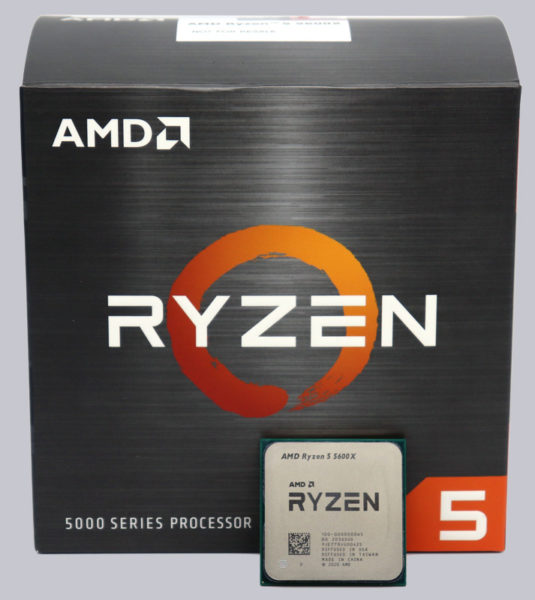
Layout, design and features …
AMD Wraith Stealth Cooler …
First, let’s take a look at the included cooler. This is an AMD Wraith Stealth. The cooler reminds a bit of the Intel boxed coolers, but is a bit larger. The cooler is cleanly manufactured.
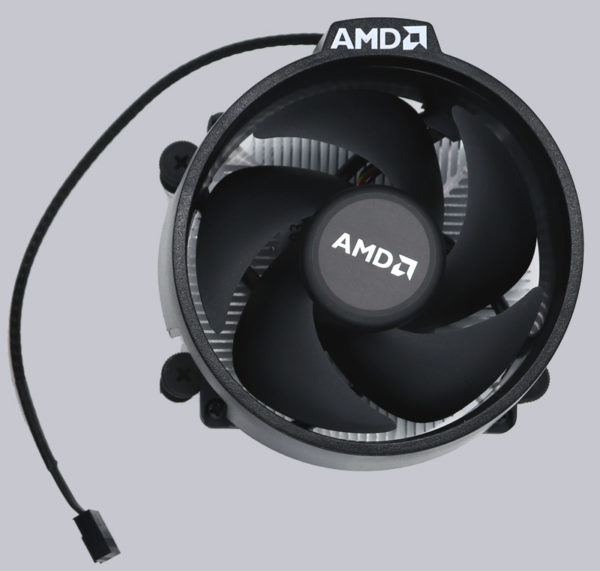
Viewed from below, you immediately notice that the heatsink is made entirely of aluminum. The thermal paste is already applied, so you only have to put the cooler on and screw it down.
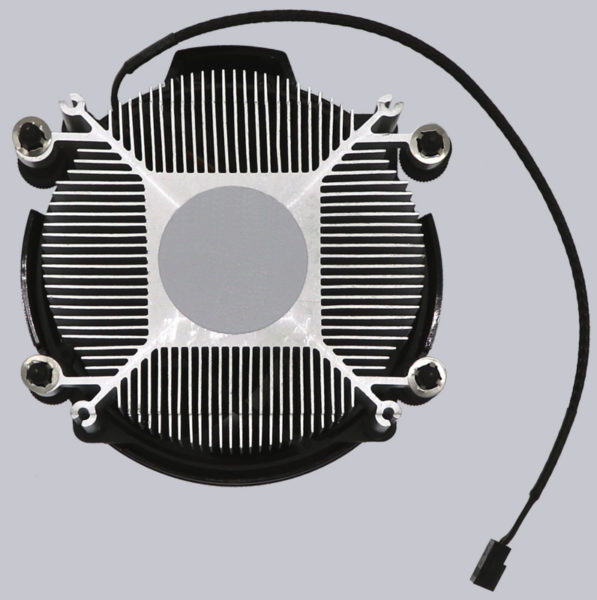
The cooler base is also made of aluminum, but a copper base plate was unfortunately omitted and the manufacturing grooves become clearly visible after removing the thermal paste.
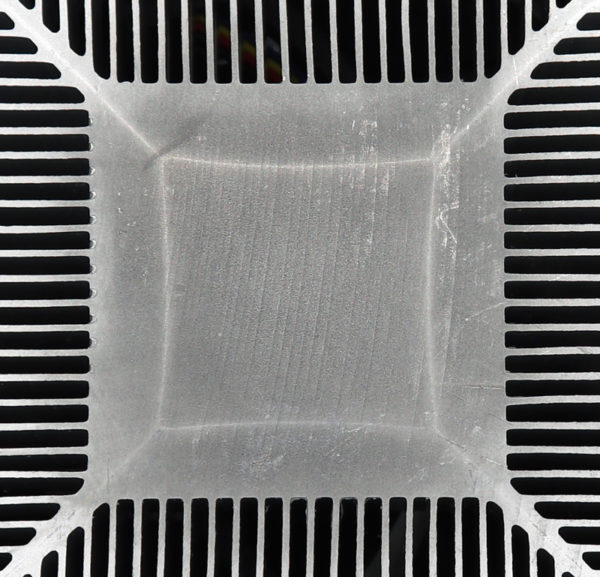
AMD Ryzen 3rd Gen CPU Design …
Now let’s take a look at the 5600X from above again …
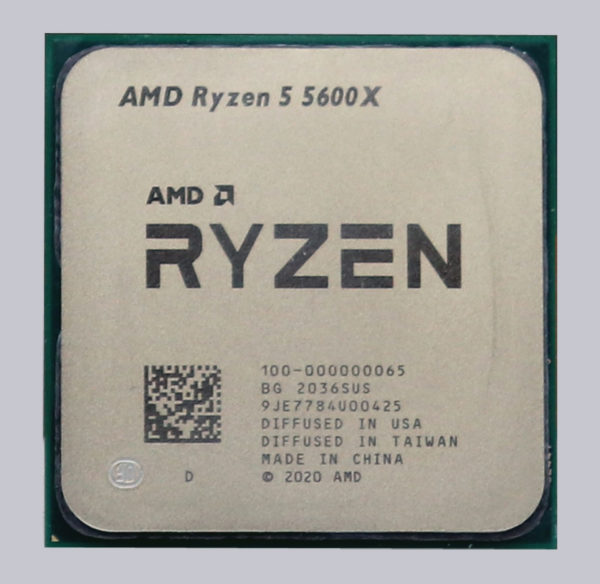
… and of course also again from below.
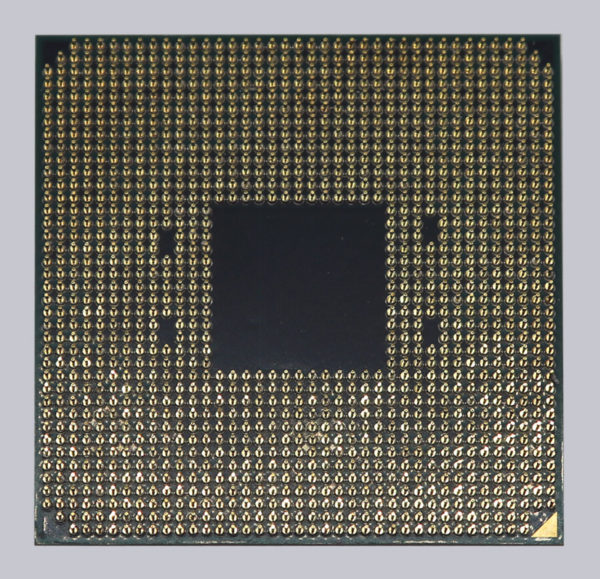
Even though nothing has changed on the outside of the new Ryzen processors, there are of course some changes on the inside. Since a complete description of the architecture would go beyond the scope of this test, we will only go into the most important changes here.
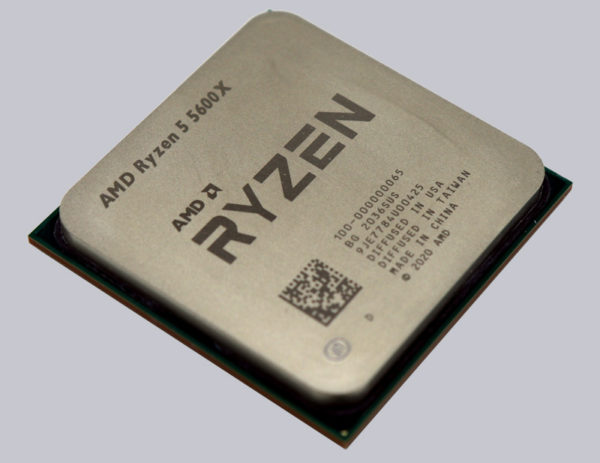
AMD Ryzen 5000 CPU without temperature offset …
AMD has omitted a temperature offset here, just like in the predecessor, the Ryzen 3000 series. Therefore, the displayed temperatures also match the measured values. A conversion is no longer necessary here.
AMD Ryzen 9 …
There are no differences to the direct predecessor here either, the maximum core count is also a maximum of 16 here.
AMD Ryzen 5000 RAM connection …
It is now well known that the Ryzen benefits greatly from fast RAM. Just like the previous generation, the Zen 3 microarchitecture has the memory tethered to the CCD via the Infinity Fabric. This bus is connected to the memory and the faster it is, the faster the communication with the CCD is. With the Ryzen 3000 generation, the memory compatibility was already significantly improved and AMD was not idle here with their Ryzen 5000. Because, as with the Ryzen 3000, a memory clock of 3200MHz is specified for the Ryzen 5000. However, the infinity fabric works with a divider from a certain clock, so there is hardly a limit in the memory clock.
The threshold of the memory clock of 3733MHz is interesting here again. Up to this clock, the Infinity Fabric works with the divider of 1:1. Above this, a divider of 1:2 is set. Therefore, at a memory speed above that, the divider has to be adjusted manually. Most Ryzen 5000 work without problems up to 3800MHz with a 1:1 divider and partly even up to 4000MHz. AMD has even released a new A.G.E.S.A, with version 1.2.0.1, especially for this. This serves to improve compatibility with DDR4 4000MHz memory.
AMD SAM …
Another feature that should not go unmentioned (many thanks to the tip from our community) is called Smart Access Memory or SAM for short. With SAM, AMD enables direct access of the AMD Ryzen CPU via the PCIe interface to the fast memory of the graphics card without the usual limitation by means of BAR Resize (Base Address Register). However, this technology is only supported by newer graphics cards. So, an AMD Ryzen 5000 CPU can directly access the AMD Radeon 6000 GPU memory via PCIe 4.0 interface and, according to AMD, by means of AMD SAM it enables on average 6% more performance in games like Boderlands 3, Forza Horizon 4, Gears 5 or Hitman 2 with an AMD Radeon RX6800 XT graphics card on a motherboard with AMD X570 or AMD B550 chipset.
AMD Ryzen 5000 IPC …
Just as with the Ryzen 3000, the IPC (Instructions per Cycle) of the Ryzen 5000 has been significantly improved while maintaining good power efficiency.
AMD Ryzen 5000 supports PCIe 4.0 …
The Ryzen 5000 also naturally supports the PCIe 4.0 bus, B550 and X570 motherboards are compatible here. Of course, the Ryzen 5000 is also compatible with the B450 and X470 boards, but here only with PCIe 3.0 if the manufacturer has not enabled PCIe 4.0, because officially on the part of AMD older B450 and X470 (as well as X370 and B350) are limited to PCI Express 3.0!
AMD Ryzen 5000 Precision Boost Overdrive …
There are only minor changes to the previous generation here, and thus the Ryzen 5000 also fully supports automatic overclocking via PBO or PBO2. We will try it out in the course of the test!
Precision Boost Overdrive (often called Power Boost Overdrive) is not the standard Precision Boost or Precision Boost 2 or XFR Extended Frequency Range to increase the clock of single cores, but combines a lot more up to undervolting. PBO2 also stands for PPT (Package Power Tracking), TDC (Thermal Design Current) as well as EDC (Electrical Design Current) and even contains a Curve Optimizer for undervolting to get more leeway when overclocking all cores. So, it’s by no means simply overclocking individual CPU cores. We are happy to help in our English AMD OC Forum, where you can also already find some posts on the topic of PBO.
After the features of the AMD 5000 series, we now come to the AMD Ryzen 5 5600X installation.


